Abstract
The effects of pre- and postorgasmic presentation of moderately erotic cues were assessed in an analogue study. Eight heterosexual male volunteers (18 to 23 years) participated in three assessment (baseline, termination-of-treatment, and two- to three-month followup) and eight masturbatory conditioning sessions. Three slides of nude females of initially equal erotic value were paired respectively with the plateau, refractory, and resolution phases of the subjects' sexual cycles. Over treatment, stimuli paired with the plateau phase increased significantly in penile tumescence indices of eroticism; conversely, stimuli paired with the refractory phase decreased significantly. The conditioned effects on tumescence were largely extinguished at followup. While treatment did not alter short-term subjective indices of eroticism, stimuli presented during the refractory phase were rated significantly less erotic than the other stimuli at followup. The findings suggest that the "pairing" model of orgasmic conditioning is insufficient to account for previously reported clinical findings. A broader conceptualization of the mechanisms of orgasmic conditioning, and implications for treatment are discussed.
Full text
PDF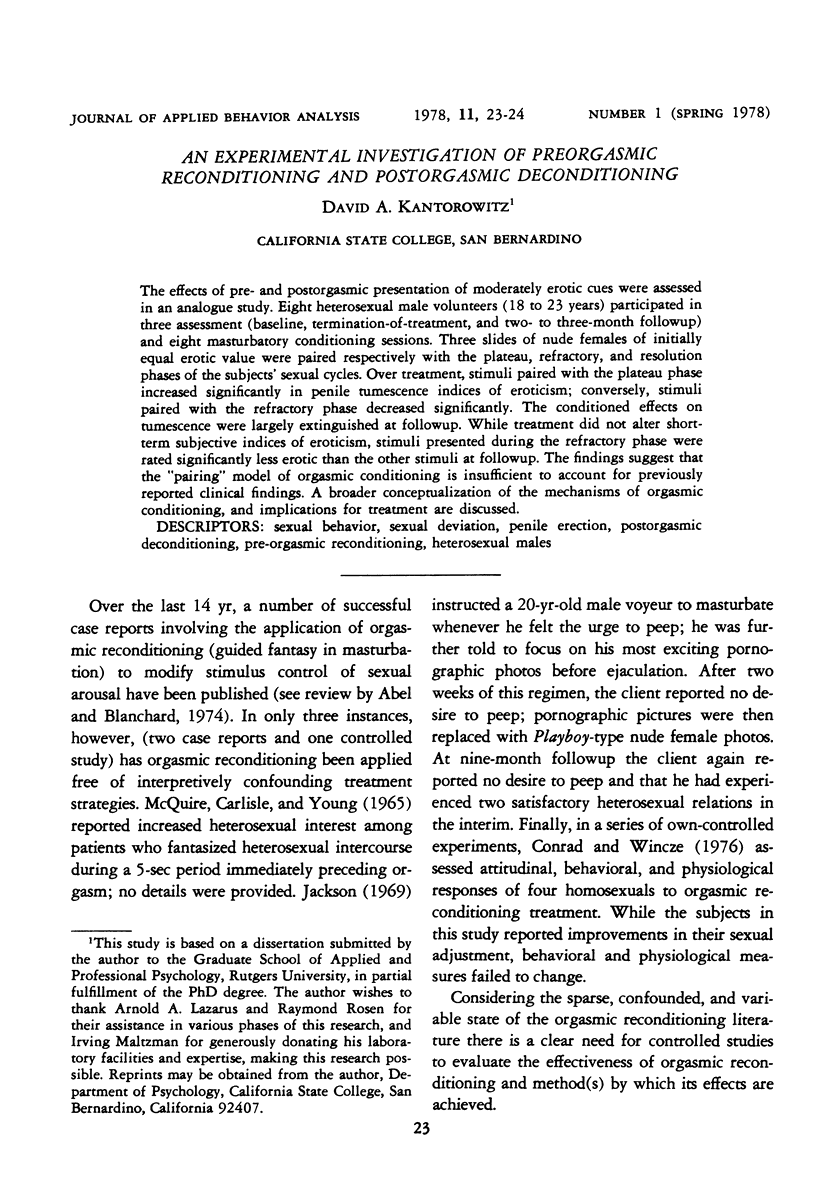
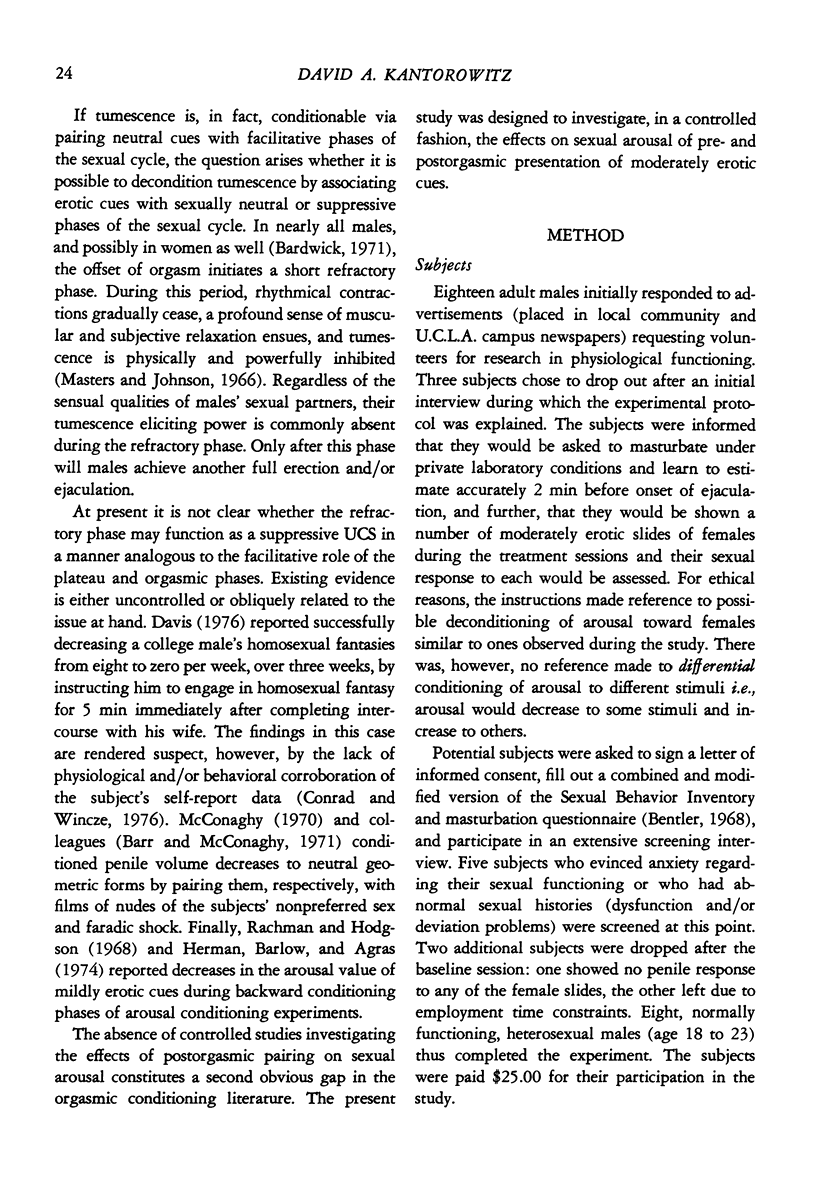
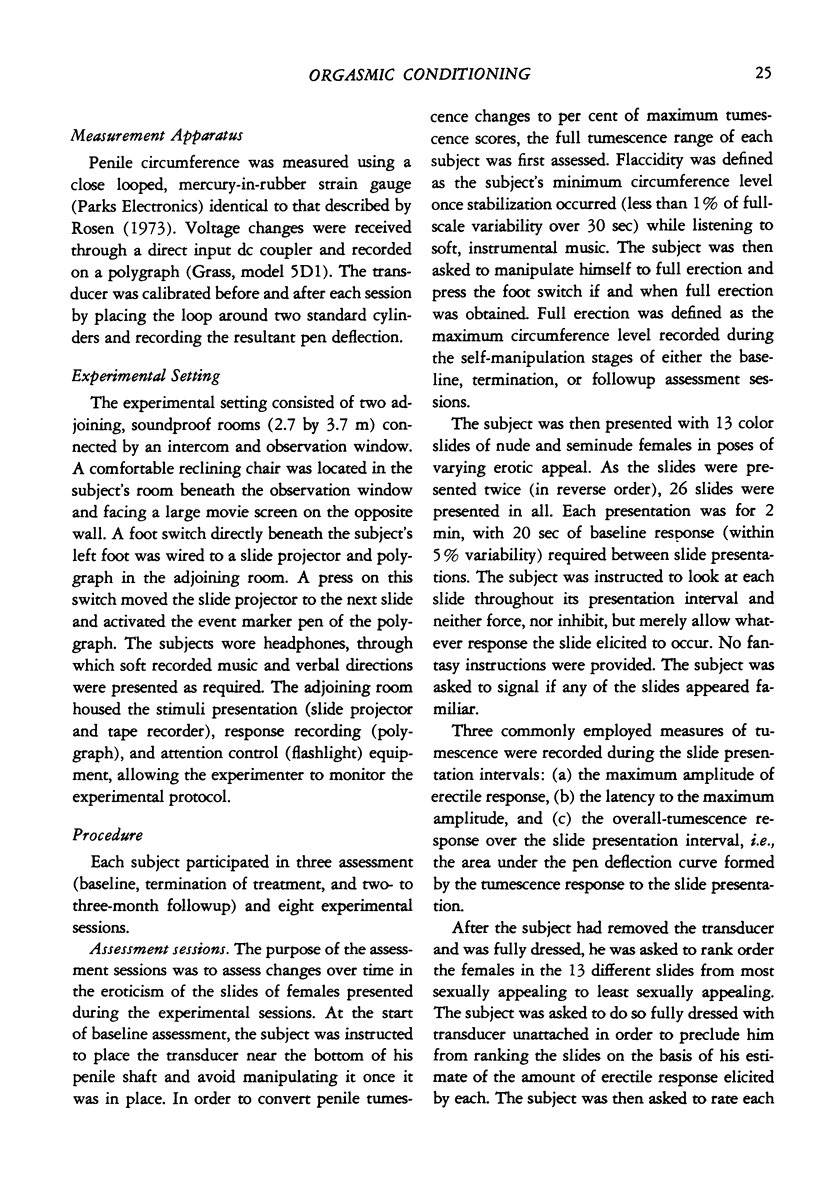
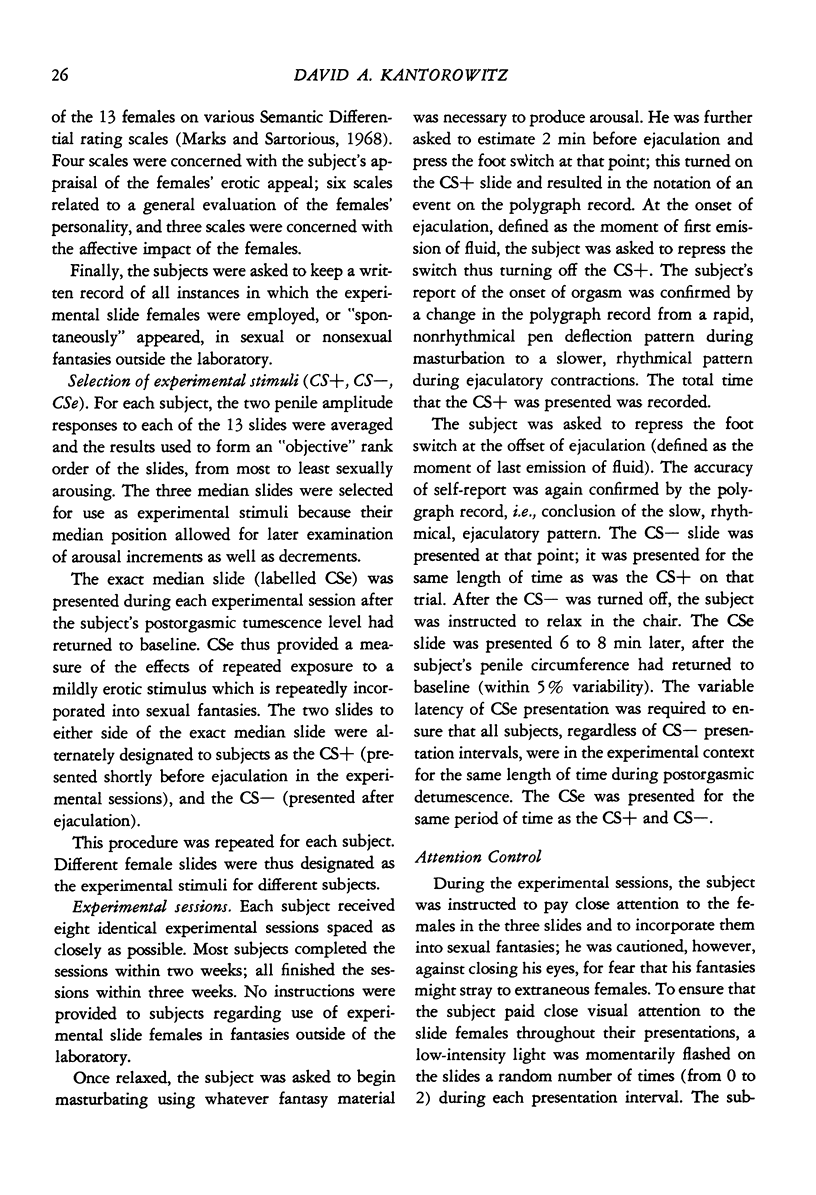
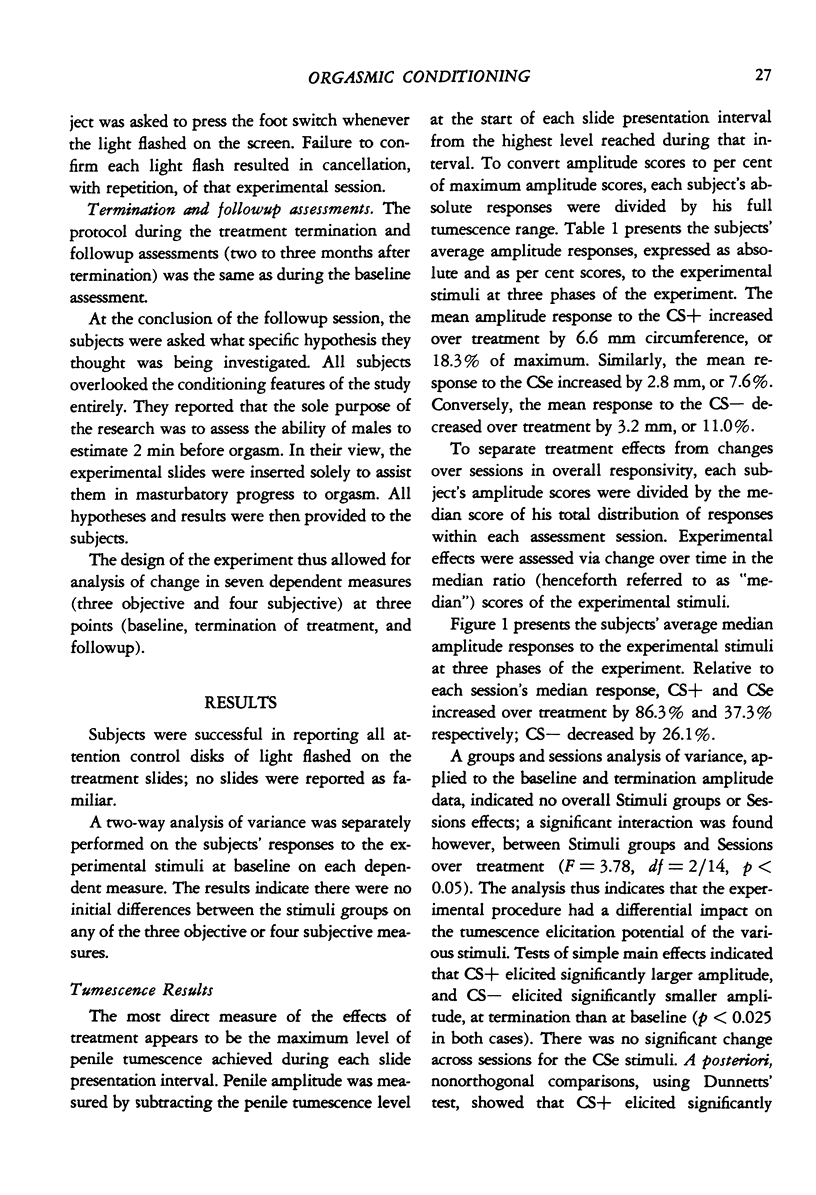
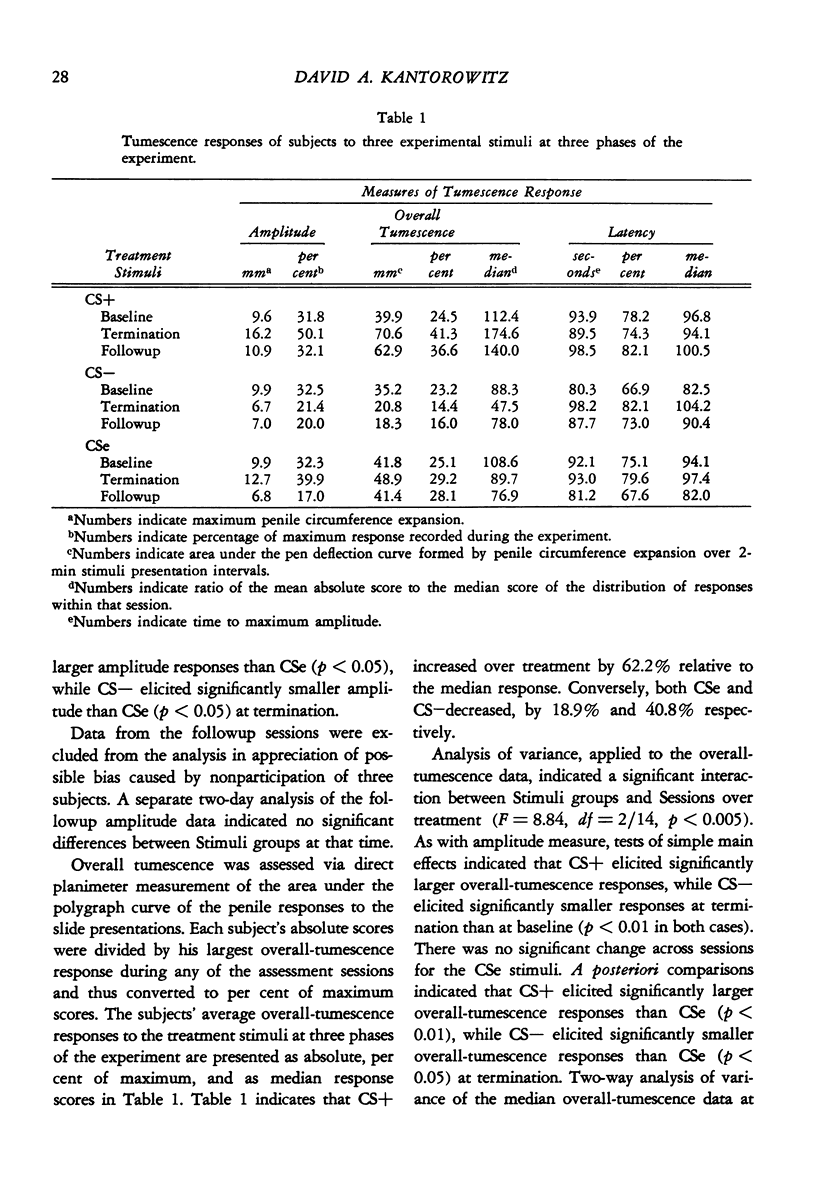
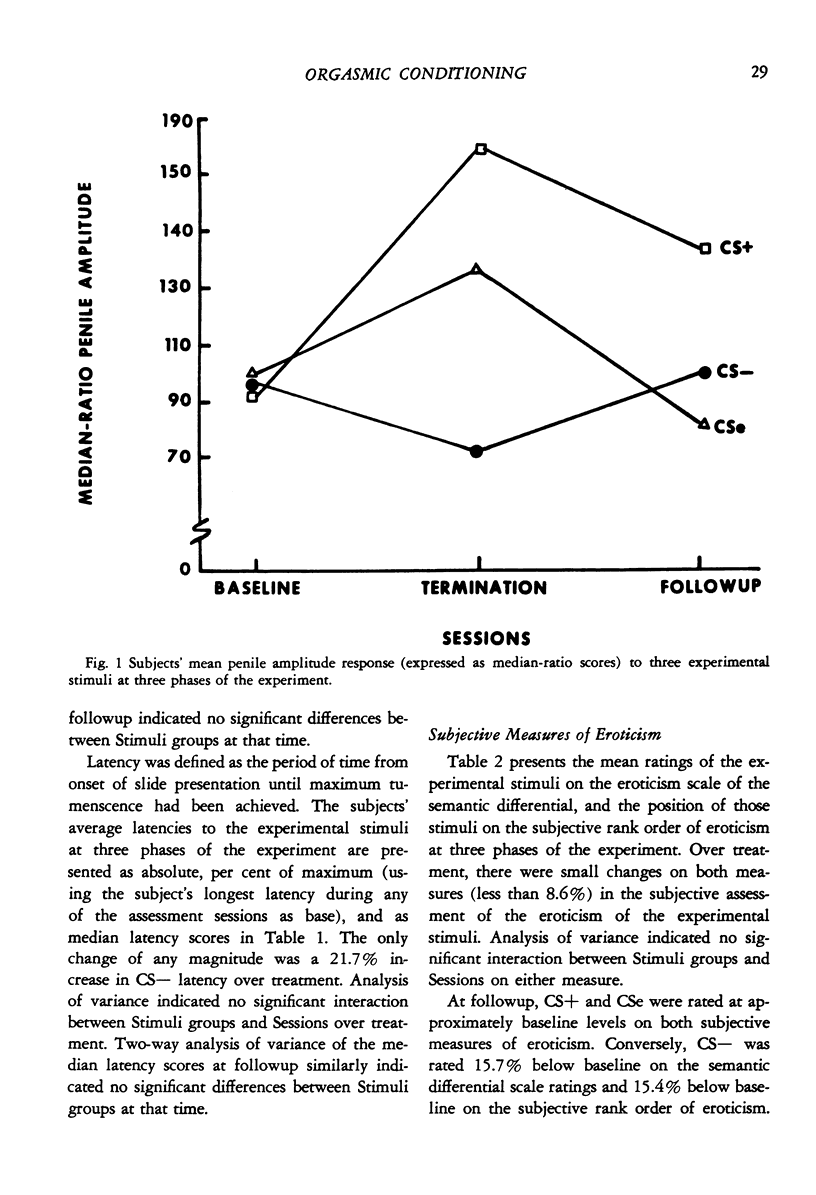
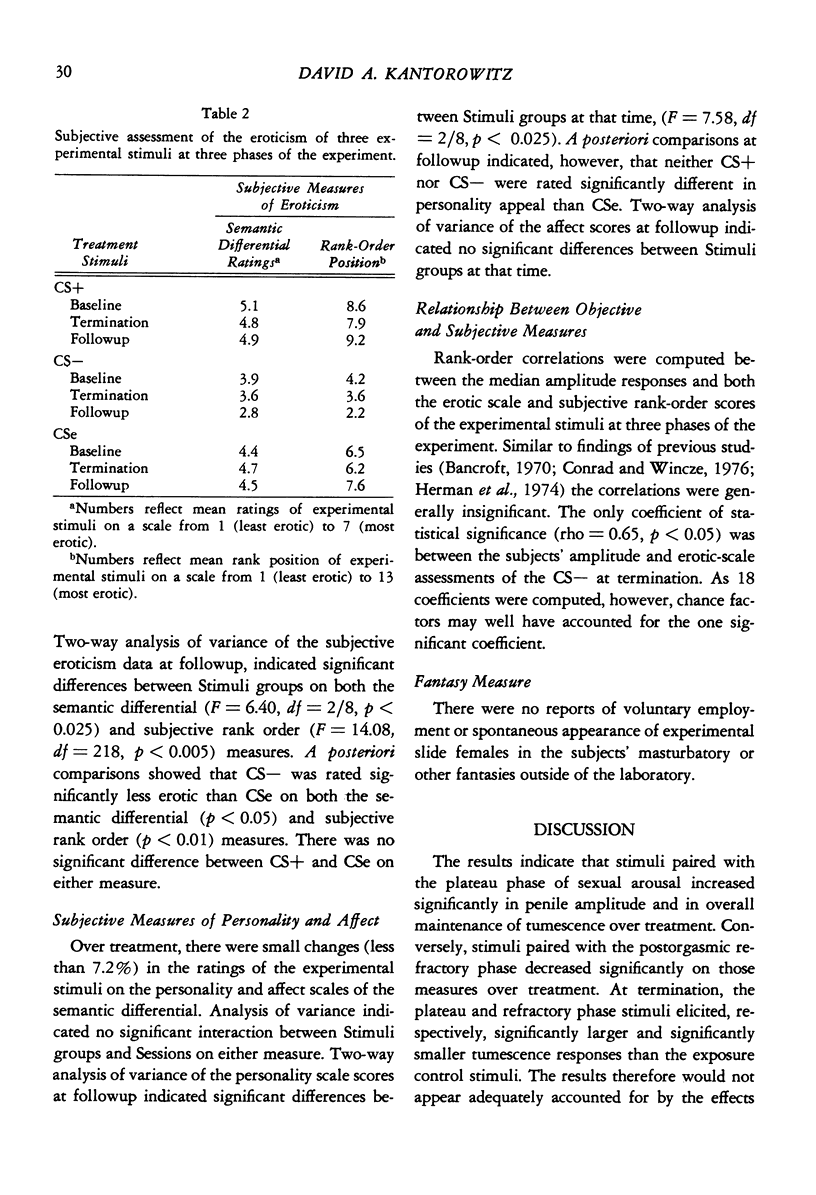

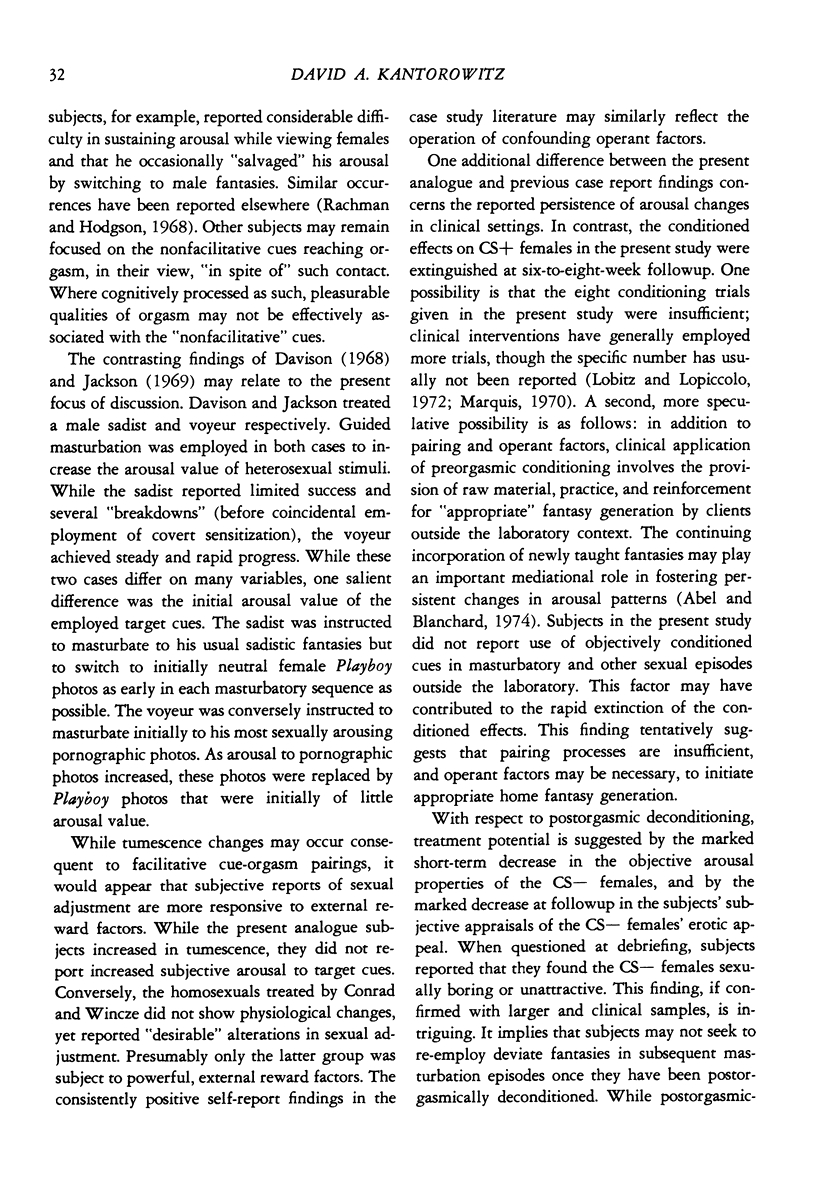

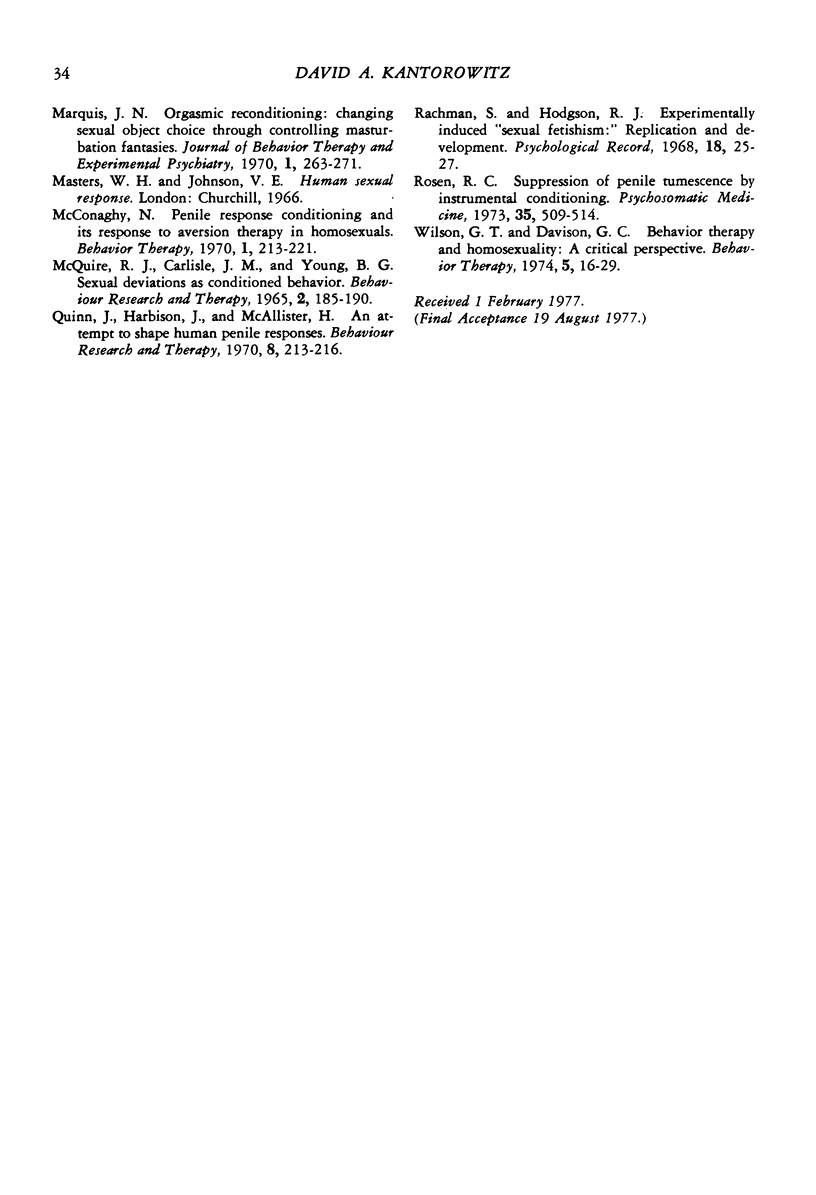
Selected References
These references are in PubMed. This may not be the complete list of references from this article.
- Abel G. G., Blanchard E. B. The role of fantasy in the treatment of sexual deviation. Arch Gen Psychiatry. 1974 Apr;30(4):467–475. doi: 10.1001/archpsyc.1974.01760100035007. [DOI] [PubMed] [Google Scholar]
- Amoroso D. M., Brown M. Problems in studying the effects of erotic material. J Sex Res. 1973 Aug;9(3):187–195. doi: 10.1080/00224497309550798. [DOI] [PubMed] [Google Scholar]
- Bancroft J. Aversion therapy of homosexuality. A pilot study of 10 cases. Br J Psychiatry. 1969 Dec;115(529):1417–1431. doi: 10.1192/bjp.115.529.1417. [DOI] [PubMed] [Google Scholar]
- Barr R. F., McConaghy N. Penile volume responses to appetitive and aversive stimuli in relation to sexual orientation and conditioning performance. Br J Psychiatry. 1971 Oct;119(551):377–383. doi: 10.1192/bjp.119.551.377. [DOI] [PubMed] [Google Scholar]
- Davison G. C. Elimination of a sadistic fantasy by a client-controlled counterconditioning technique: a case study. J Abnorm Psychol. 1968 Feb;73(1):84–90. doi: 10.1037/h0025440. [DOI] [PubMed] [Google Scholar]
- Henson D. E., Rubin H. B. Voluntary control of eroticism. J Appl Behav Anal. 1971 Spring;4(1):37–44. doi: 10.1901/jaba.1971.4-37. [DOI] [PMC free article] [PubMed] [Google Scholar]
- Jackson B. T. A case of voyeurism treated by counterconditioning. Behav Res Ther. 1969 Feb;7(1):133–134. doi: 10.1016/0005-7967(69)90058-8. [DOI] [PubMed] [Google Scholar]
- MCGUIRE R. J., CARLISLE J. M., YOUNG B. G. SEXUAL DEVIATIONS AS CONDITIONED BEHAVIOUR: A HYPOTHESIS. Behav Res Ther. 1964;2(2-4):185–190. doi: 10.1016/0005-7967(64)90014-2. [DOI] [PubMed] [Google Scholar]
- Marks I. M., Sartorius N. H. A contribution to the measurement of sexual attitude. The semantic differential as a measure of sexual attitude in sexual deviations. J Nerv Ment Dis. 1967 Dec;145(6):441–451. doi: 10.1097/00005053-196712000-00002. [DOI] [PubMed] [Google Scholar]
- Quinn J. T., Harbison J. J., McAllister H. An attempt to shape human penile responses. Behav Res Ther. 1970 May;8(2):213–216. doi: 10.1016/0005-7967(70)90095-1. [DOI] [PubMed] [Google Scholar]
- Rosen R. C. Suppression of penile tumescence by instrumental conditioning. Psychosom Med. 1973 Nov-Dec;35(6):509–514. doi: 10.1097/00006842-197311000-00006. [DOI] [PubMed] [Google Scholar]


